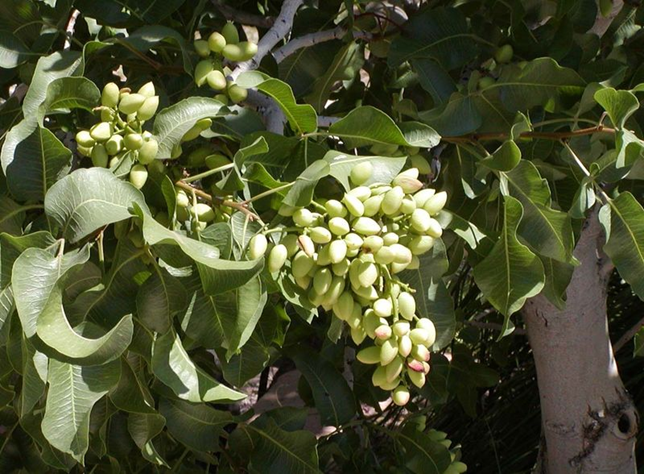Home is Where the Heart is
Pistacia vera is native to Asia and the
Young Pistacia vera in dry, tropical climate
Physical Description
Since the pistachio plant may have two trunks and it may grow bushy
and broad, it usually grows in an open habitat. Under
optimal conditions the pistachio tree ma y live and
reproduce for
hundreds of years. Pistachios are flowering trees that have
brownish green flowers without pedals. When the time is right,
usually at the start of summer, the flowers produce fruit. The
fruit grows in clusters that are parallel to
grapes.
This fruit has become known as a nut but it is actually a drupe
which is simply the edible part of a seed. This fruit is usually
red or green in color and is enclosed in a tough shell. The
greener the nut is, the better it is suppose to taste.
y live and
reproduce for
hundreds of years. Pistachios are flowering trees that have
brownish green flowers without pedals. When the time is right,
usually at the start of summer, the flowers produce fruit. The
fruit grows in clusters that are parallel to
grapes.
This fruit has become known as a nut but it is actually a drupe
which is simply the edible part of a seed. This fruit is usually
red or green in color and is enclosed in a tough shell. The
greener the nut is, the better it is suppose to taste.
Pistachio tree beginning to droop and form fruit
Want to know more? See how the pistachio thrives is this habitat by visiting Adaptation and Nutrition

